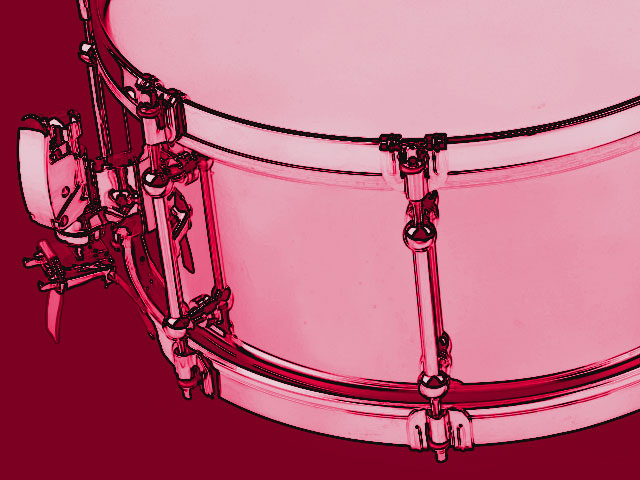- Published May 16, 2013 in In The Studio
It’s time to take a look at the snare, hi hat, toms and room mics to round out a great sound and bring it all together.
Snare drum.
I use a dynamic mic on the top of the drum, placed from the front side of the snare, the capsule about an inch past the rim, 3 inches above, and looking down to the center of the drum.
Depending on how a drummer sets up, you might have to tuck it under the hi hat or change the position slightly so the drummer doesn’t keep smacking it. On the bottom of the snare drum I use a condenser mic looking straight up and about 3 to 5 inches off the bottom head. This really picks up the snares and high end. These two mics will be out of phase so reverse the phase on the bottom mic.
Hi Hat.
I recommend a condenser mic about a foot away from the hat and 6 inches to a foot above with the mic pointed towards the edge of the hat.
Rack and floor toms.
I use a dynamic mic on rack toms and a large condenser on the floor tom. For the rack tom, I like to place the mic above the head and looking back. So, the stand is in front of the drum, the arm extends over and past the drum and the mic looks back to the head. This eliminates a lot of bleed from the hat and snare, but you have to get it just right so the drummer won’t hit it.
If this way isn’t possible, then the mic should just be looking down at the head from over the front rim and about 3 inches above.
For the floor tom, I place the mic on the side of the drum looking toward the snare and then move the mic to look down and to the center of the drum, about 4 inches above the rim. Chances are this mic will be out of phase so reverse it!
Room mics.
I usually prefer condenser mics for rooms. The X/Y mic’ing I talked about in Part 2 works well for a stereo room. You can also use mics on either side of the room, looking towards the kit. I use the center of the kick drum as the bull’s-eye to aim them.
You can also just go with a mono room mic. I generally only use a mono ribbon mic for room. Placement is everything. Too close and when combined with the other mics it’ll get messy; in the wrong place or dead position you’ll miss the point of having them at all.
The tone should be ambient and even. If the cymbals jump out too much, you might want to use a little tape to dampen them without crushing their soul.
A couple other thoughts.
Make sure things don’t move around–mic stands swaying, drummer pushing the kit forward, or mics hitting rims when the drummer hits the drum.
Make sure the kick pedal doesn’t squeak – oil it if it’s a chain driven pedal. Get rid of all rattles.
Make sure there’s nothing inside the drum and all lugs and bolts are tightened. Heads don’t have to be new but only slightly played on is best. Tuning a drum is very, very important. If a drum is making a ringing sound try re-tuning both heads or detuning one lug on the top or bottom.
As a last resort some well placed gaffers tape will do the trick. If you have to use tape (and everyone does sooner or later) try placing the tape towards the edge of the drum where the mic is. I prefer batter heads but I’m old school and like a more open ringing tone.

